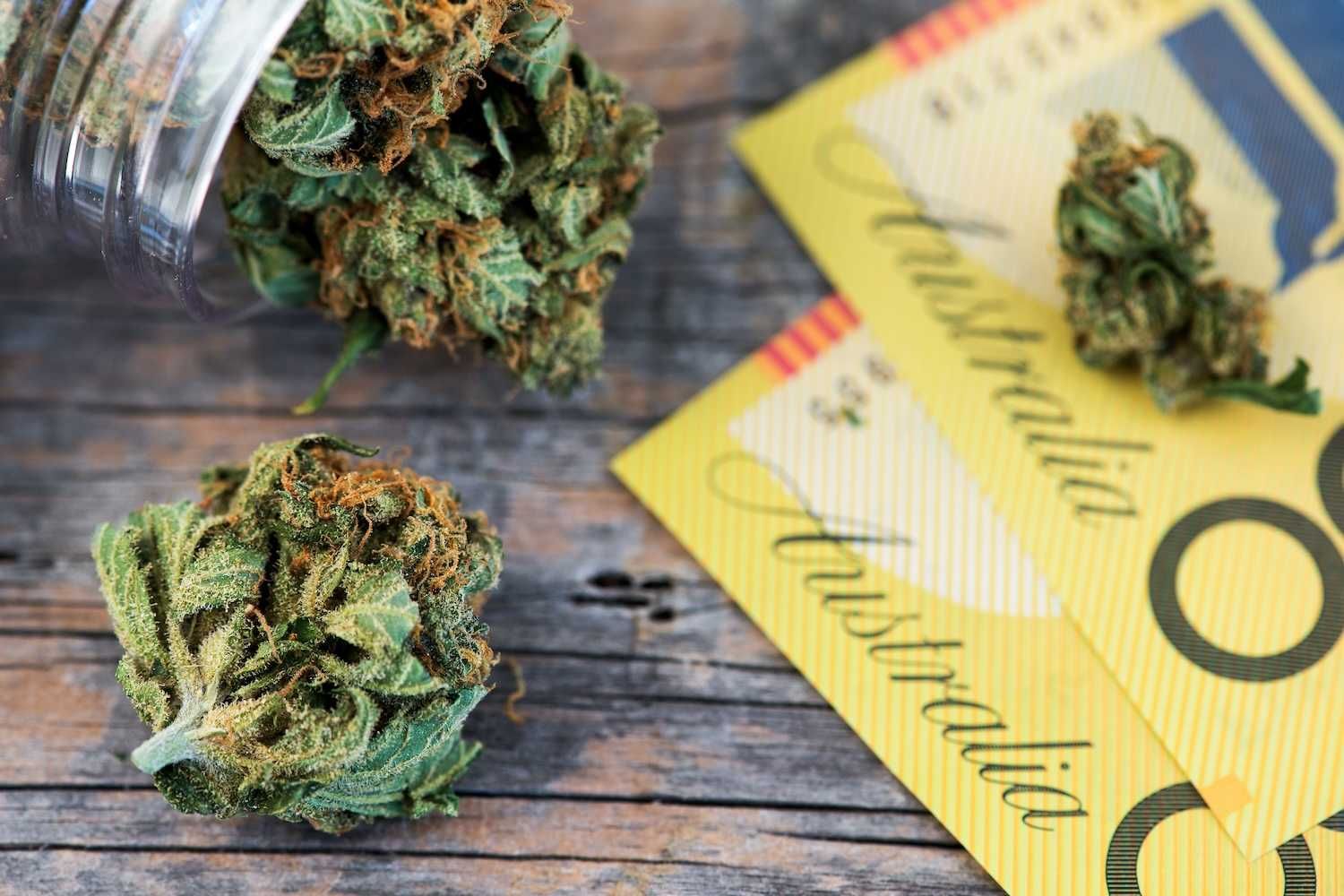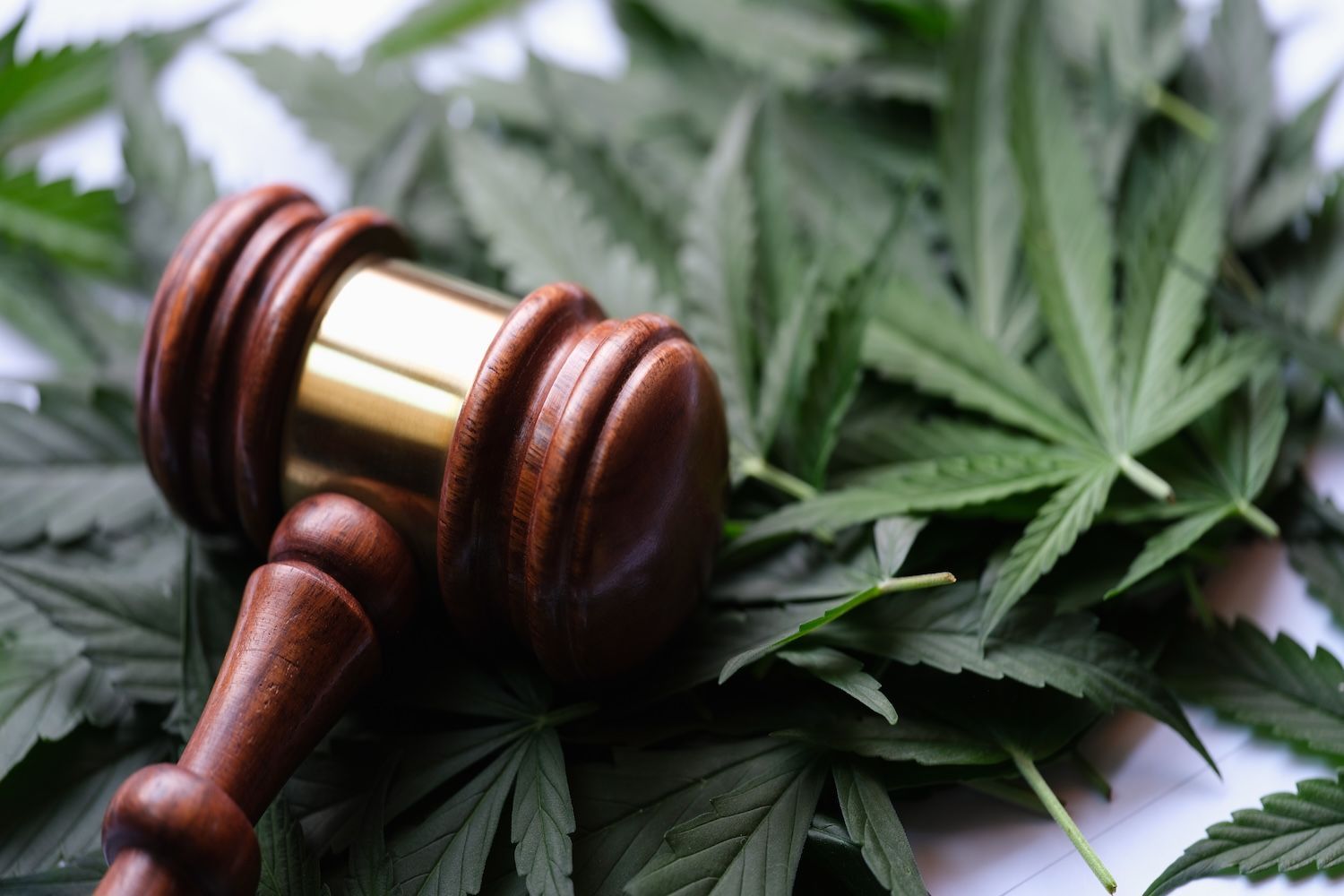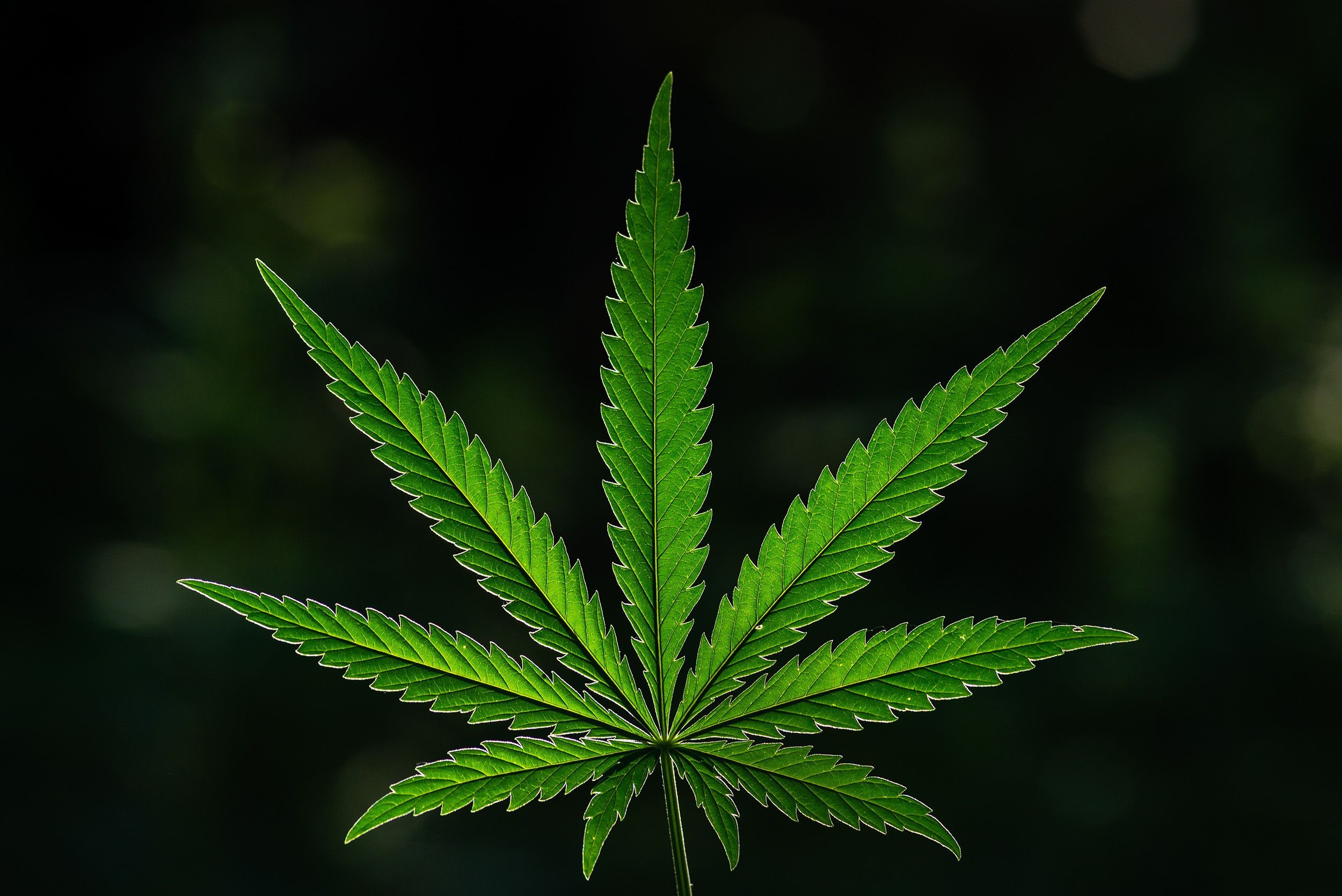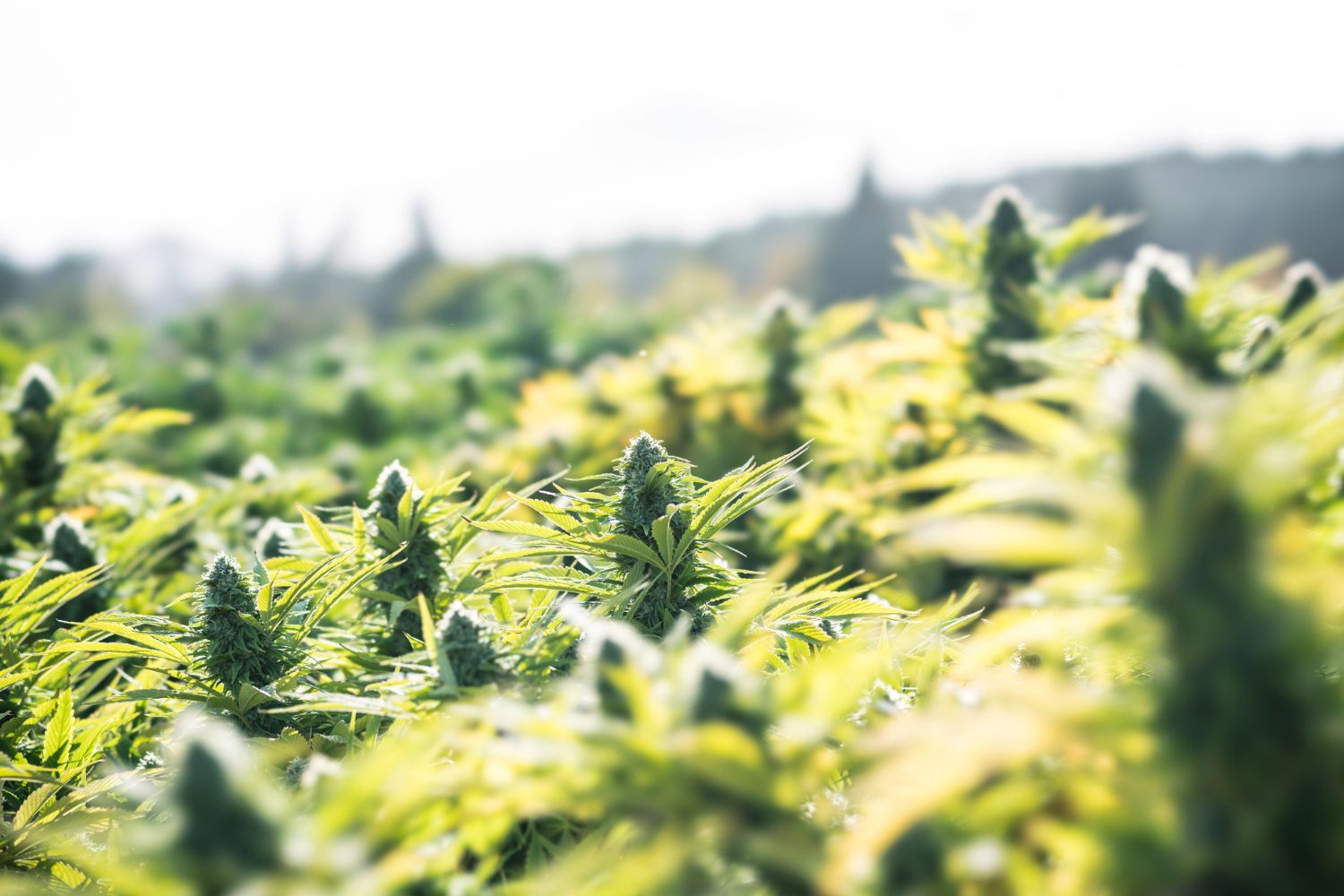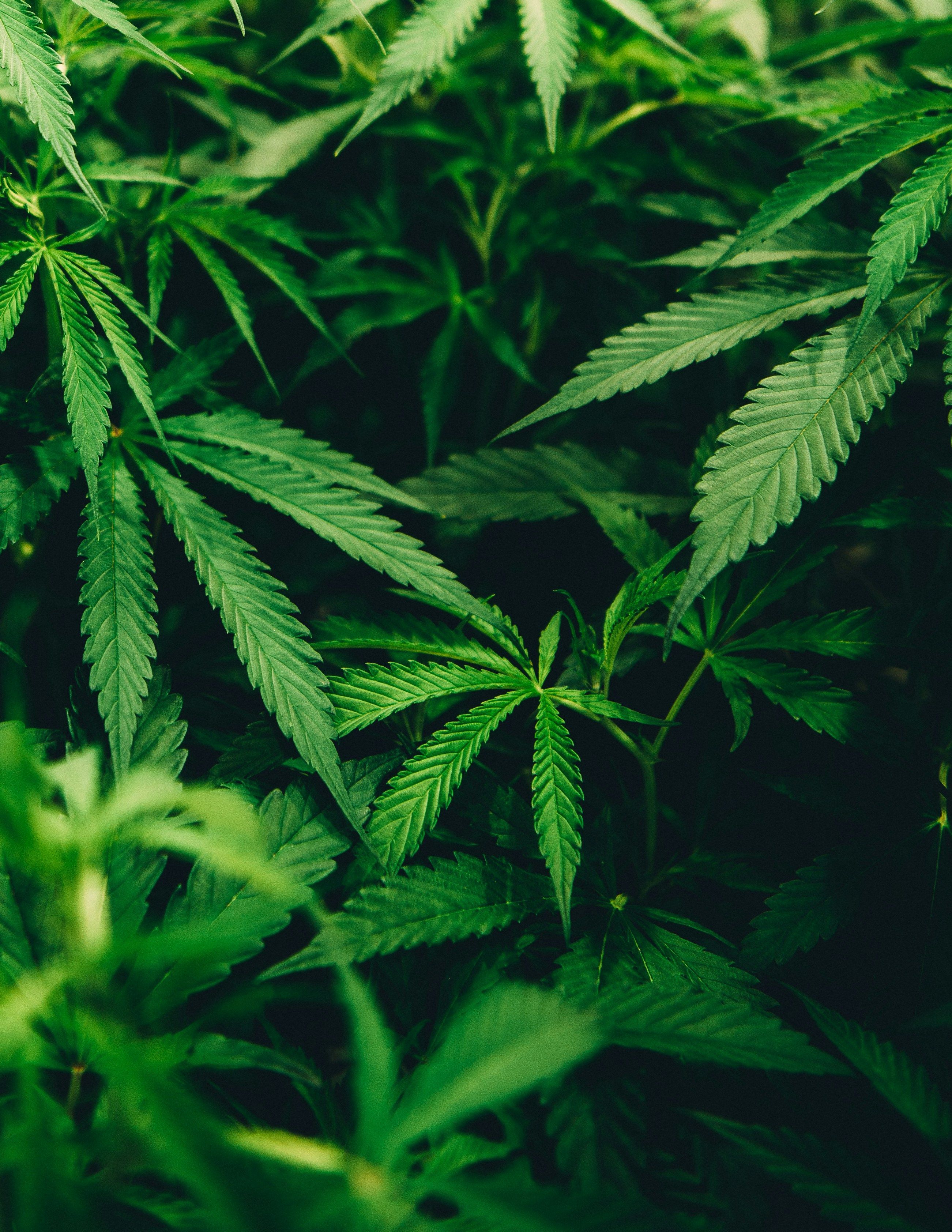Second quarter GAAP revenue of $21.1 million increased 34.9% sequentially and 48.2% YoY –
– Excluding former Arizona operations, second quarter revenue increased 62.7% YoY –
MINNEAPOLIS , Aug. 11, 2022 /PRNewswire/ -- Goodness Growth Holdings, Inc. ("Goodness Growth" or the "Company") (CSE: GDNS; OTCQX: GDNSF), a physician-led, science-focused cannabis company and IP incubator, today reported financial results for its second quarter ended June 30, 2022 . All currency figures referenced in this press release reflect U.S. dollar amounts.
"Our second quarter results reflect improved margin performance driven by continued growth in our Minnesota , New Mexico , and Maryland markets, as well as benefits from the recent wind down of operations in Arizona which we discussed last quarter," said Chairman and Chief Executive Officer, Kyle Kingsley , M.D. "GAAP gross margin performance includes activities related to our Arizona operations, which were wound down prior to the end of the second quarter. Excluding Arizona operations, we estimate that second quarter pro forma gross margins would have been approximately 55.0 percent."
Kingsley continued, "Strong sales growth catalysts resulting from the recent regulatory changes in Minnesota and New Mexico are expected to persist into next year, and we're also looking forward to contributions from the launch of edibles products which occurred in Minnesota earlier this month. Finally, our expansion project in New York is progressing ahead of the launch of adult-use sales in that important market, and we continue to expect our pending transaction to be acquired by Verano Holdings Corp. will close sometime during the fourth quarter of this year."
| Summary of Key Financial Metrics | | | | | | | | | | | | |
| | | | | | | | | | | | | |
| Three Months Ended | | Six Months Ended | | |||||||||
| US $ in millions | June 30, | | June 30, | | ||||||||
| | 2022 | | 2021 | | Variance | | 2022 | | 2021 | | Variance | |
| | | | | | | | | | | | | |
| GAAP Revenue | $21.1 | | $14.2 | | 48.2 % | | $36.7 | | $27.4 | | 33.9 % | |
| Revenue (excl. AZ and OH) | $19.7 | | $12.1 | | 62.7 % | | $34.4 | | $21.8 | | 57.9 % | |
| GAAP Gross Profit | $10.4 | | $6.9 | | 50.0 % | | $12.9 | | $12.5 | | 2.6 % | |
| Gross Profit Margin | 49.2 % | | 48.6 % | | 60 bps | | 35.0 % | | 45.7 % | | -1,070 bps | |
| SG&A Expenses | $8.6 | | $8.3 | | 3.9 % | | $17.9 | | $16.3 | | 9.8 % | |
| SG&A Expenses (% of Sales) | 40.9 % | | 58.3 % | | -1,740 bps | | 48.7 % | | 59.6 % | | -1,070 bps | |
| Adjusted EBITDA (non-GAAP) | $2.3 | | ($1.0) | | NM | | ($0.3) | | ($2.7) | | NM | |
| Adjusted EBITDA Margin (non-GAAP) | 11.1 % | | (6.8 %) | | 1,790 bps | | (0.8 %) | | (10.0 %) | | 920 bps | |
Second Quarter 2022 Financial Summary
Total revenue in the second quarter was $21.1 million , an increase of 48.2 percent as compared to Q2 2021, and 34.9 percent as compared to Q1 2022. Excluding contributions from the Company's former Arizona operations, total revenue increased 62.7 percent year-over-year and reflected strong growth in the Company's Maryland , Minnesota , and New Mexico markets. Retail revenue excluding Arizona increased 74.5 percent to $17.0 million in Q2 2022. Wholesale revenue excluding Arizona increased by 14.2 percent to $2.7 million , driven by increased sales in Maryland and Minnesota .
Gross profit was $10.4 million , or 49.2 percent of revenue, as compared to gross profit of $6.9 million or 48.6 percent of revenue in Q2 last year. The improvement in gross profit dollars was driven by higher production volume and increased sales, with relatively stable margin performance.
Total operating expenses in the second quarter were $10.1 million , a reduction of $0.1 million as compared to $10.2 million in the second quarter of 2021.
Operating income in the second quarter was $0.3 million , an increase of $3.5 million compared to an operating loss of $3.2 million in Q2 last year. The improvement in operating performance was driven by increased revenue and gross profit dollars, as well as the slight reduction in total operating expenses.
Total other expenses were $5.4 million during Q2 2022, compared to $2.9 million in Q2 2021. The variance in other expenses is primarily attributable to increased interest expense related to the Company's credit facility.
EBITDA, as described in accompanying non-GAAP reconciliation, was $1.1 million during Q2 2022, compared to a loss of $2.4 million in Q2 2021. Adjusted EBITDA was $2.3 million in Q2 2022, as compared to a loss of $1.0 million in Q2 2021. Please refer to the Supplemental Information and Reconciliation of Non-GAAP Financial Measures at the end of this press release for additional information.
Net loss in Q2 2022 was $6.2 million , as compared a loss of $7.0 million in Q2 2021. The variance compared to the prior year was driven by the improvement in operating income, offset by increased interest expenses.
Other Events
On February 1, 2022 , the Company announced that it has entered into a definitive arrangement agreement with Verano Holdings Corp. pursuant to which Verano will acquire all of the issued and outstanding shares of the Company in an all-share transaction valued at the time of announcement at approximately US $413 million on a fully-diluted basis. Under the terms of the Arrangement Agreement, each holder of Goodness Growth subordinate voting shares will receive 0.22652 of a Verano Class A subordinate voting share for each Goodness Growth subordinate voting share held and each holder of Goodness multiple voting shares and Goodness Growth super voting shares will receive 22.652 Verano Shares for each Goodness Growth multiple voting share and Goodness Growth super voting share held, respectively. The transaction is subject to the approval of shareholders; the approvals of the Supreme Court of British Columbia ; New York State regulatory requirements; and other customary conditions of closing.
On June 23, 2022 , the Company announced the launch of HiColor™ cannabis-infused chews in New York , which are now available through the Company's retail and wholesale channels in the New York market. The new line of cannabis-infused edibles is currently available in five gourmet flavors and two formulations.
On August 1, 2022 , the Company announced the launch of cannabis-infused gummies at all eight of the Company's Green Goods® dispensaries in Minnesota , in accordance with Minnesota's new regulations allowing certified medical cannabis patients in the state to purchase certain edible products containing cannabis. Gummies are available in 10mg formulations and in Key Lime, Concord Grape, Hawaiian Pineapple and Oxnard Strawberry flavors. An additional formulation, with equal amounts of THC and CBD and in Alfonso Mango flavor, is expected to follow later this year.
Balance Sheet and Liquidity
As of June 30, 2022 , the Company had 128,111,328 equity shares issued and outstanding on an as-converted basis, and 159,619,637 shares outstanding on an as-converted, fully diluted basis.
As of June 30, 2022 , total current assets were $46.4 million . The Company had cash on hand of $17.0 million , which included net proceeds received from an increase on its delayed draw loan of $13.5 million during the second quarter. Total current liabilities were $18.5 million .
About Goodness Growth Holdings, Inc.
Goodness Growth Holdings, Inc., is a physician-led, science-focused holding company whose mission is to bring the power of plants to the world. The Company's operations consist primarily of its multi-state cannabis company subsidiary, Vireo Health, Inc., and its science and intellectual property incubator, Resurgent Biosciences, Inc. The Company manufactures proprietary, branded cannabis products in environmentally friendly facilities and state-of-the-art cultivation sites, and distributes its products through its growing network of Green Goods ® and other retail locations and third-party dispensaries. Its team of more than 500 employees are focused on the development of differentiated products, driving scientific innovation of plant-based medicines and developing meaningful intellectual property. Today, the Company is licensed to grow, process, and/or distribute cannabis in five markets and operates 18 dispensaries across the United States . For more information about Goodness Growth Holdings, please visit www.goodnessgrowth.com .
Additional Information
Additional information relating to the Company's second quarter 2022 results will be available on EDGAR and SEDAR on August 12, 2022 . Goodness Growth refers to certain non-GAAP financial measures such as Earnings Before Interest, Taxes, Depreciation and Amortization (EBITDA) and adjusted EBITDA (defined as earnings before interest, taxes, depreciation, and amortization, less certain non-cash equity compensation expense, one-time transactions, and other non-recurring non-cash items. These measures do not have any standardized meaning and may not be comparable to similar measures presented by other issuers. Please see the Supplemental Information and Reconciliation of Non-GAAP Financial Measures at the end of this news release for more detailed information regarding non-GAAP financial measures.
Contact Information
Investor Inquiries:
Sam Gibbons
Vice President, Investor Relations
samgibbons@goodnessgrowth.com
(612) 314-8995
Media Inquiries:
Amanda Hutcheson
Corporate Communications
amandahutcheson@goodnessgrowth.com
(919) 815-1476
Forward-Looking Statement Disclosure
This press release contains "forward-looking information" within the meaning of applicable United States and Canadian securities legislation. To the extent any forward-looking information in this press release constitutes "financial outlooks" within the meaning of applicable United States or Canadian securities laws, such information is being provided as preliminary financial results and the reader is cautioned that this information may not be appropriate for any other purpose and the reader should not place undue reliance on such financial outlooks. Forward-looking information contained in this press release may be identified by the use of words such as "should," "estimate," "would," "looking forward," "may," "continue," "expect," "expected," "will," "believe," "subject to," and "pending," or variations of such words and phrases. These statements should not be read as guarantees of future performance or results. Forward-looking information includes both known and unknown risks, uncertainties, and other factors which may cause the actual results, performance, or achievements of the Company or its subsidiaries to be materially different from any future results, performance, or achievements expressed or implied by the forward-looking statements or information contained in this press release. Financial outlooks, as with forward-looking information generally, are, without limitation, based on the assumptions and subject to various risks as set out herein and in our Annual Report on Form 10-K filed with the Securities Exchange Commission. Our actual financial position and results of operations may differ materially from management's current expectations and, as a result, our revenue, adjusted EBITDA, and cash on hand may differ materially from the values provided in this press release. Forward-looking information is based upon a number of estimates and assumptions of management, believed but not certain to be reasonable, in light of management's experience and perception of trends, current conditions, and expected developments, as well as other factors relevant in the circumstances, including assumptions in respect of current and future market conditions, the current and future regulatory environment, and the availability of licenses, approvals and permits.
Although the Company believes that the expectations and assumptions on which such forward-looking information is based are reasonable, undue reliance should not be placed on the forward-looking information because the Company can give no assurance that they will prove to be correct. Actual results and developments may differ materially from those contemplated by these statements. Forward-looking information is subject to a variety of risks and uncertainties that could cause actual events or results to differ materially from those projected in the forward-looking information. Such risks and uncertainties include, but are not limited to, risks related to the timing of adult-use legislation in markets where the Company currently operates; current and future market conditions, including the market price of the subordinate voting shares of the Company; risks related to the COVID-19 pandemic; federal, state, local, and foreign government laws, rules, and regulations, including federal and state laws in the United States relating to cannabis operations in the United States and any changes to such laws; operational, regulatory and other risks; execution of business strategy; management of growth; difficulty to forecast; conflicts of interest; risks inherent in an agricultural business; liquidity and additional financing; the timing of adult-use sales in New Mexico and New York ; the Company's ability to meet the demand for flower in Minnesota ; risk of delay in consummation of or failure to consummate the transaction with Verano; and risk factors set out in the Company's Annual Report on Form 10-K for the year ended December 31, 2021 , which is available on EDGAR with the U.S. Securities and Exchange Commission and filed with the Canadian securities regulators and available under the Company's profile on SEDAR at www.sedar.com .
The statements in this press release are made as of the date of this release. Forward-looking statements in this press release, other than the statements regarding the proposed arrangement with Verano, do not assume the consummation of such proposed arrangement unless specifically stated otherwise. Except as required by law, we undertake no obligation to update any forward-looking statements or forward-looking information to reflect events or circumstances after the date of such statements.
Supplemental Information
The financial information reported in this news release is based on unaudited financial statements for the fiscal quarters ended June 30, 2022 and June 30, 2021 . All financial information contained in this news release is qualified in its entirety with reference to such financial statements. To the extent that the financial information contained in this news release is inconsistent with the information contained in the Company's audited financial statements, the financial information contained in this news release shall be deemed to be modified or superseded by the Company's audited financial statements. The making of a modifying or superseding statement shall not be deemed an admission for any purposes that the modified or superseded statement, when made, constituted a misrepresentation for purposes of applicable securities laws.
| GOODNESS GROWTH HOLDINGS, INC. | | | | | | |
| CONSOLIDATED BALANCE SHEETS AS OF JUNE 30, 2022 AND DECEMBER 31, 2021 | | | | | | |
| (Amounts Expressed in United States Dollars, Unaudited and Condensed) | | | | | | |
| | | June 30, | | December 31, | ||
| | | 2022 | | 2021 | ||
| Assets | | | | | | |
| Current assets: | | | | | | |
| Cash | | $ | 16,970,729 | | $ | 15,155,279 |
| Accounts receivable, net of allowance for doubtful accounts of $543,680 and $572,080, | | | 6,488,784 | | | 4,502,469 |
| Inventory | | | 18,607,668 | | | 20,422,061 |
| Prepayments and other current assets | | | 2,591,556 | | | 1,560,113 |
| Assets Held for Sale | | | 1,729,017 | | | — |
| Total current assets | | | 46,387,754 | | | 41,639,922 |
| Property and equipment, net | | | 94,225,562 | | | 99,488,559 |
| Operating lease, right-of-use asset | | | 7,852,578 | | | 8,510,499 |
| Notes receivable, long-term | | | 3,750,000 | | | 3,750,000 |
| Intangible assets, net | | | 9,771,479 | | | 10,184,289 |
| Goodwill | | | 183,836 | | | 183,836 |
| Deposits | | | 2,121,487 | | | 1,718,206 |
| Deferred tax assets | | | 4,530,000 | | | 1,495,000 |
| Total assets | | $ | 168,822,696 | | $ | 166,970,311 |
| Liabilities | | | | | | |
| Current liabilities | | | | | | |
| Accounts Payable and Accrued liabilities | | $ | 15,608,858 | | $ | 14,805,473 |
| Right of use liability | | | 1,775,746 | | | 1,600,931 |
| Liabilities held for sale | | | 1,140,828 | | | — |
| Total current liabilities | | | 18,525,432 | | | 16,406,404 |
| Right-of-use liability | | | 80,452,937 | | | 80,228,097 |
| Long-Term debt | | | 45,847,769 | | | 27,329,907 |
| Total liabilities | | $ | 144,826,138 | | $ | 123,964,408 |
| Stockholders' equity | | | | | | |
| Subordinate Voting Shares ($- par value, unlimited shares authorized; 84,111,628 shares | | | — | | | — |
| Multiple Voting Shares ($- par value, unlimited shares authorized; 374,586 shares issued and | | | — | | | — |
| Super Voting Shares ($- par value; unlimited shares authorized; 65,411 shares issued and | | | — | | | — |
| Additional Paid in Capital | | | 180,169,935 | | | 178,429,422 |
| Accumulated deficit | | | (156,173,377) | | | (135,423,519) |
| Total stockholders' equity | | $ | 23,996,558 | | $ | 43,005,903 |
| Total liabilities and stockholders' equity | | $ | 168,822,696 | | $ | 166,970,311 |
| GOODNESS GROWTH HOLDINGS, INC. | | | | | | | | | | | | |
| CONSOLIDATED STATEMENTS OF OPERATIONS | | | | | | | | | | |||
| THREE AND SIX MONTHS ENDED JUNE 30, 2022 AND 2021 | | | | | | | | | | |||
| (Amounts Expressed in United States Dollars, Unaudited and Condensed) | | | | | | | | | | |||
| | | Three Months Ended | | Six Months Ended | ||||||||
| | | June 30, | | June 30, | ||||||||
| | | 2022 | | 2021 | | 2022 | | 2021 | ||||
| Revenue | | $ | 21,090,148 | | $ | 14,230,900 | | $ | 36,728,720 | | $ | 27,420,789 |
| Cost of sales | | | | | | | | | | | | |
| Product costs | | | 10,663,251 | | | 7,273,011 | | | 20,346,228 | | | 14,779,059 |
| Inventory valuation adjustments | | | 59,871 | | | 45,000 | | | 3,526,788 | | | 113,000 |
| Gross profit | | | 10,367,026 | | | 6,912,889 | | | 12,855,704 | | | 12,528,730 |
| Operating expenses: | | | | | | | | | | | | |
| Selling, general and administrative | | | 8,625,439 | | | 8,299,682 | | | 17,903,408 | | | 16,335,673 |
| Stock-based compensation expenses | | | 1,098,008 | | | 1,408,080 | | | 1,740,513 | | | 3,454,698 |
| Depreciation | | | 163,127 | | | 246,247 | | | 319,224 | | | 417,809 |
| Amortization | | | 172,267 | | | 206,442 | | | 344,533 | | | 412,885 |
| Total operating expenses | | | 10,058,841 | | | 10,160,451 | | | 20,307,678 | | | 20,621,065 |
| | | | | | | | | | | | | |
| Income (loss) from operations | | | 308,185 | | | (3,247,562) | | | (7,451,974) | | | (8,092,335) |
| | | | | | | | | | | | | |
| Other income (expense): | | | | | | | | | | | | |
| Impairment of long-lived assets | | | (54,739) | | | — | | | (5,367,915) | | | — |
| Loss on sale of property and equipment | | | (10,930) | | | — | | | (10,930) | | | — |
| Gain on disposal of assets | | | — | | | — | | | 168,359 | | | 437,107 |
| Interest expenses, net | | | (5,297,823) | | | (2,756,358) | | | (9,899,622) | | | (3,782,504) |
| Other income (expenses) | | | (82,769) | | | (98,055) | | | 1,117,224 | | | (41,387) |
| Other income (expenses), net | | | (5,446,261) | | | (2,854,413) | | | (13,992,884) | | | (3,386,784) |
| | | | | | | | | | | | | |
| Loss before income taxes | | | (5,138,076) | | | (6,101,975) | | | (21,444,858) | | | (11,479,119) |
| | | | | | | | | | | | | |
| Current income tax expenses | | | (965,000) | | | (885,000) | | | (2,340,000) | | | (2,620,000) |
| Deferred income tax recoveries | | | (80,000) | | | (25,000) | | | 3,035,000 | | | 210,000 |
| Net loss and comprehensive loss | | | (6,183,076) | | | (7,011,975) | | | (20,749,858) | | | (13,889,119) |
| Net loss per share - basic and diluted | | $ | (0.05) | | $ | (0.06) | | $ | (0.16) | | $ | (0.11) |
| Weighted average shares used in computation of net | | | 128,111,328 | | | 125,557,734 | | | 128,111,328 | | | 120,856,801 |
| GOODNESS GROWTH HOLDINGS, INC. | | | | | | |
| CONSOLIDATED STATEMENTS OF CASH FLOWS | | | | | | |
| SIX MONTHS ENDED JUNE 30, 2022 AND 2021 | | | | | | |
| (Amounts Expressed in United States Dollars, Unaudited and Condensed) | | | | | | |
| | | June 30, | ||||
| | | 2022 | | 2021 | ||
| CASH FLOWS FROM OPERATING ACTIVITIES | | | | | | |
| Net loss | | $ | (20,749,858) | | $ | (13,889,119) |
| Adjustments to reconcile net loss to net cash used in operating activities: | | | | | | |
| Inventory valuation adjustments | | | 3,526,788 | | | 113,000 |
| Depreciation | | | 319,224 | | | 417,809 |
| Depreciation capitalized into inventory | | | 1,314,056 | | | 986,896 |
| Non-cash operating lease expense | | | 558,083 | | | 519,176 |
| Amortization of intangible assets | | | 344,533 | | | 412,885 |
| Stock-based payments | | | 1,740,513 | | | 3,454,698 |
| Interest Expense | | | 2,162,218 | | | 886,628 |
| Impairment of long-lived assets | | | 5,367,915 | | | — |
| Deferred income tax | | | (3,035,000) | | | (210,000) |
| Accretion | | | 2,521,196 | | | 195,197 |
| Loss on Sale of Property and Equipment | | | 10,930 | | | — |
| Gain on disposal of OMS | | | — | | | (437,107) |
| Gain on disposal of royalty asset | | | (168,359) | | | — |
| Change in operating assets and liabilities: | | | | | | |
| Accounts Receivable | | | (1,986,315) | | | (1,531,985) |
| Prepaid expenses | | | (1,031,442) | | | (292,260) |
| Inventory | | | (1,612,556) | | | (4,059,044) |
| Accounts payable and accrued liabilities | | | 870,373 | | | (4,182,954) |
| Change in assets and liabilities held for sale | | | — | | | 124,843 |
| Net cash used in operating activities | | $ | (9,847,701) | | $ | (17,491,337) |
| | | | | | | |
| CASH FLOWS FROM INVESTING ACTIVITIES: | | | | | | |
| PP&E Additions | | $ | (3,917,948) | | $ | (11,028,976) |
| Proceeds from sale of property, plant, and equipment | | | 372,815 | | | — |
| Proceeds from sale of royalty asset | | | 236,635 | | | — |
| Acquisition of MJ Distributing | | | — | | | (1,592,500) |
| Proceeds from sale of OMS net of cash | | | — | | | 1,150,000 |
| Deposits | | | (403,281) | | | (1,595) |
| Net cash provided by (used in) investing activities | | $ | (3,711,779) | | $ | (11,473,071) |
| | | | | | | |
| CASH FLOWS FROM FINANCING ACTIVITIES | | | | | | |
| Proceeds from long-term debt, net of issuance costs | | $ | 16,355,643 | | $ | 23,162,526 |
| Convertible debt payment | | | — | | | (900,000) |
| Proceeds from option exercises | | | — | | | 1,075,723 |
| Lease principal payments | | | (980,713) | | | (653,165) |
| Net cash provided by financing activities | | $ | 15,374,930 | | $ | 22,685,084 |
| | | | | | | |
| Net change in cash and restricted cash | | $ | 1,815,450 | | $ | (6,279,324) |
| | | | | | | |
| Cash and restricted cash, beginning of period | | $ | 15,155,279 | | $ | 27,105,680 |
| | | | | | | |
| Cash and restricted cash, end of period | | $ | 16,970,729 | | $ | 20,826,356 |
Reconciliation of Non-GAAP Financial Measures
EBITDA and Adjusted EBITDA are non-GAAP measures and do not have standardized definitions under GAAP. The following information provides reconciliations of the supplemental non-GAAP financial measures, presented herein to the most directly comparable financial measures calculated and presented in accordance with GAAP. The Company has provided the non-GAAP financial measures, which are not calculated or presented in accordance with GAAP, as supplemental information and in addition to the financial measures that are calculated and presented in accordance with GAAP. These supplemental non- GAAP financial measures are presented because management has evaluated the financial results both including and excluding the adjusted items and believe that the supplemental non-GAAP financial measures presented provide additional perspective and insights when analyzing the core operating performance of the business. These supplemental non-GAAP financial measures should not be considered superior to, as a substitute for or as an alternative to, and should be considered in conjunction with, the GAAP financial measures presented.
| Reconciliation of Net Loss to EBITDA and Adjusted EBITDA | | | | | | | | | | |||
| (Amounts Expressed in United States Dollars, Unaudited and Condensed) | | | | | | | | | | |||
| | | Three Months Ended | | Six Months Ended | ||||||||
| | | June 30, | | June 30, | ||||||||
| | | 2022 | | 2021 | | 2022 | | 2021 | ||||
| Net income (loss) | | $ | (6,183,076) | | $ | (7,011,975) | | $ | (20,749,858) | | $ | (13,889,119) |
| Interest expense, net | | | 5,297,823 | | | 2,756,358 | | | 9,899,622 | | | 3,782,504 |
| Income taxes | | | 1,045,000 | | | 910,000 | | | (695,000) | | | 2,410,000 |
| Depreciation & Amortization | | | 335,394 | | | 452,689 | | | 663,757 | | | 830,694 |
| Depreciation included in cost of goods sold | | | 613,863 | | | 478,537 | | | 1,314,056 | | | 986,896 |
| EBITDA (non-GAAP) | | $ | 1,109,004 | | $ | (2,414,391) | | $ | (9,567,423) | | $ | (5,879,025) |
| Inventory adjustment | | | 59,871 | | | 45,000 | | | 3,526,788 | | | 113,000 |
| Loss on impairment of long-lived assets | | | 54,739 | | | — | | | 5,367,915 | | | — |
| Stock-based compensation | | | 1,098,008 | | | 1,408,080 | | | 1,740,513 | | | 3,454,698 |
| Other income | | | — | | | — | | | (1,190,863) | | | — |
| Gain (loss) on disposal of assets | | | 10,930 | | | — | | | (157,429) | | | (437,107) |
| Adjusted EBITDA (non-GAAP) | | $ | 2,332,552 | | $ | (961,311) | | $ | (280,499) | | $ | (2,748,434) |
![]() View original content to download multimedia: https://www.prnewswire.com/news-releases/goodness-growth-holdings-announces-second-quarter-2022-results-301603776.html
View original content to download multimedia: https://www.prnewswire.com/news-releases/goodness-growth-holdings-announces-second-quarter-2022-results-301603776.html
SOURCE Goodness Growth Holdings, Inc.



